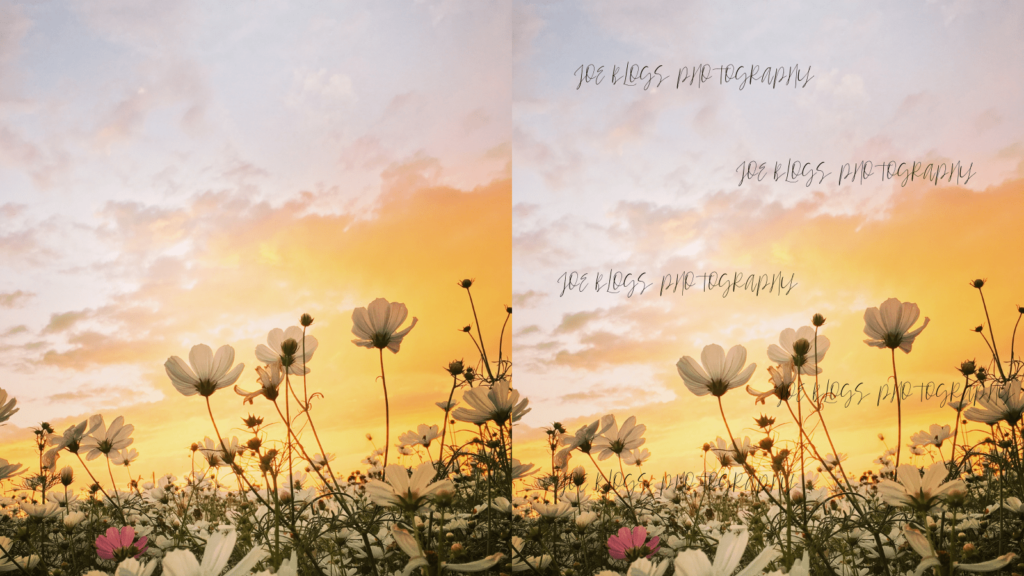Watermarking your images can help protect them from being used without your permission. Many creatives add this as an extra layer of protection.

So what is watermarking? Well, if you’re not already clued-up, it’s simple – watermarking is where the original artist or creator places their name across the image, so it cannot be stolen. As you can see above, there are two versions of the same image. One, has the photographer’s name across it, and the other does not.
The idea of a watermark is to prevent people from taking the image without paying for it. It’s often done to images that are available for purchase. Photographers protect their work from being used for free. Watermarks are often placed on images that appear on websites and social media accounts. Whether it be their own, or someone else’s.
Types of watermarks
Watermarks come in all shapes and sizes – literally. You can place whatever you like onto your images. The idea of a watermark is to be obvious enough, so your images cannot be stolen and used freely. However, not so obvious that they completely distract from your work.
For example, you could place your photography name on your images. However, you likely won’t want to cover your images in emojis as not only does it look unprofessional, but it prevents viewers from being able to see your work correctly.
If people cannot see your true image, they’re less likely to buy them. Many creatives will either place their logo on an image, or they’ll add their creative name. This clearly identifies who the images belong to.
A watermark can be placed anywhere on your image. You can add it once, or several times. You’ll notice in our example, we placed multiple copies of the photographer’s name. This is because we wanted to ensure it couldn’t easily be removed.
Pros to using a watermark in your images
Typically, those who choose to add watermarks to their images are aiming to protect their work from being stolen. Below are various pros to adding a watermark:
- Preventing anyone from stealing your images and using them as their own.
- Stopping clients who have used their services from taking the images for free. The money for photographers often comes from their prints rather than the shoot itself.
- Ensuring their images aren’t used to be heavily manipulated.
- Protecting certain images from being put into the wrong hands and used as unintended.
- They don’t want low quality prints being distributed. Many clients may take the images and print them cheaply, ruining the image quality.
Cons to adding watermarks in your images
While many add watermarks into their images, there are also many who don’t. It might seem like a reckless idea, but they have their reasons:
- When uploading to social platforms, the quality drops anyway, so there is no need to damage it further by adding a watermark.
- Watermarks don’t look particularly nice. Therefore, they can affect the view of your image.
- If someone wants to steal your image, a watermark may not put them off. A watermark can be removed. There are several apps and websites that will do this for someone quickly.
- Photos that are stolen can be claimed upon. Photographers can file lawsuits.
- Depending on where you place your watermark, it might be an easy crop for someone anyway.
And there you have it. Pros and cons to watermarking your images. What are your thoughts? For many, a watermark adds an extra layer of security and makes them feel better when sharing. After all, creatives work really hard to create their images, not to be used for free.



